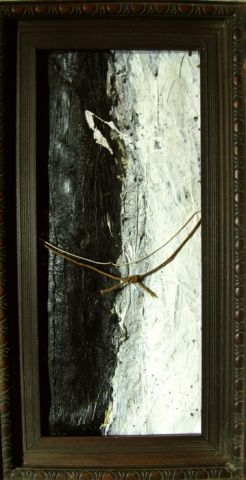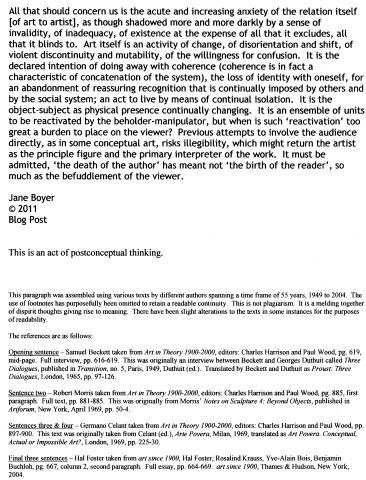Can a work of art really be connected to the artist when the artist hasn’t made it or perhaps even touched it?
Breaking through the restrictions of medium, what Rosalind Krauss calls the post-medium condition, shattered the boundaries but has it lead us over the cliff?
Heightening perception, honing thought, sharpening the act of looking are all extremely important but is it really art until they are mixed with the attempt to communicate? That’s where art becomes poignant. The frailty of our grasp on what lies beyond us means certain failure in our attempts to communicate and that is what is absolutely magnificent about creation. It is not possible to communicate perception but we try and in the attempt we expose all it means to be alive. We can’t do this without a medium, without a tool, something we can shape – and I’m not talking literally here in the conventional understanding of medium, tools and form.
Many critics believe the days of media specificity (to use artspeak) are gone. Artists like Kosuth, Bergin, Broodthaers, Duchamp smashed those barriers and the mundane workings of paint, metal, plaster, wood no longer hold the mysteries they once did for many artists. But that’s not to say they’re dead (refer back to my posts 29-32 for a discussion of painting with Rob Turner). In fact, I believe we are about to see the phoenix rise from the flames. Medium is being redefined and Krauss is spearheading this redefinition.
She calls medium the technical support of a work, not the physical support like canvas or armatures. One example she uses is the work of Ed Ruscha. In his works, twenty-six gas stations, Krauss claims Ruscha is using the automobile as a medium. His use of the car-culture in America enabled his exploration of the American psyche. I might add, not unlike the way Edward Hopper explored isolation and the American psyche in paint a generation before, but Ruscha is doing it via the car. These works by Ruscha are photographic in nature but they have nothing to do with the process of photography. These works explore the process of driving, which is a state of isolation.
I’m inspired by this redefinition of medium by Krauss; it is one of the main motivations behind the work I create. I’m called a painter but I use very little paint in my paintings. My work is not about the application of paint, nor is it about how the paint (or other material) looks on the canvas. It’s not about the relationship of paint/material to canvas. It’s not about the limitations of paint or canvas or of the two dimensional plane. It is about how my movement is registered in the materials I put between myself and the canvas. It is about how no matter what I do my context has a direct impact on what I attempt. It is about how classification (socialization?) orders me and my thoughts. In short the technical support of my work – my medium is movement and it is a movement, which combined with thought, equals the presence of an individual.









